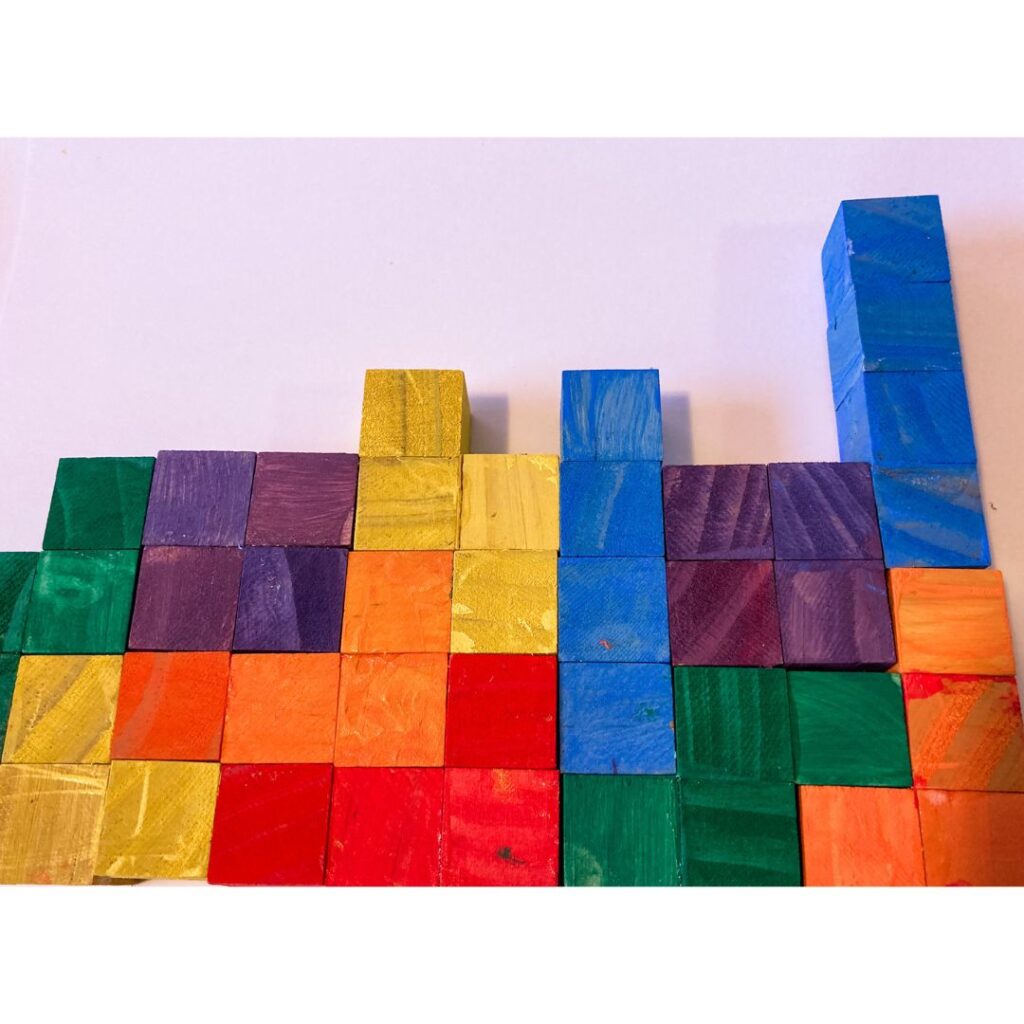
Tetris is a long time favorite video game of many people, and the name of the game has become popular in everyday language. For example, if someone is really good at organizing boxes in a closet, suitcases in the luggage compartment on a plane, or items in square containers, they might exclaim “It’s like a game of Tetris!”. Indeed, it is quite satisfying to master the art of spatial arrangement! So here, we invite children to play with homemade Tetris blocks to explore the game through kinesthetic learning.
This takes a bit longer to put together than most activities because you will be making a toy, that we hope will lead to hours of play and learning for children. Invite children to help you paint or to arrange the cubes for you to glue together. Leave this out as part of your blocks center, or place these blocks in a pencil box to use as a portable play kit.
Set up Time: 5 minutes
Directions
Gather together 1 inch or 2 cm wooden blocks. You can order them online or pick them up at a craft shop.
Paint them with acrylic paint. Let them dry.
Use “Tacky Glue” or craft glue to make your tetris shapes. There should be a series of “L” shapes, “Zig Zag” shapes, “T” shapes, and Straight Lines. Let them dry.
Play!
Materials
- Wooden cube blocks
- Acrylic paint in various colors
- Paint brushes
- Tacky glue
Learning Through Play
Cognitive: Problem Solving – As mentioned in the prompt, Tetris presents one of the most satisfying ways to engage in simple problem solving that is actually quite useful in life! Use this as an exercise to help children find the balance between independence and assistance. For example, if you see an obvious solution to a challenge, such as the perfect place for a “T” shaped block to fit, but the child has the block faced the wrong way, you can wait and let them figure it out, or ask a few open-ended questions to invite them to think about their problem, such as “I wonder what would happen if…” And if children get very frustrated, this is a great chance to model positive approaches to problem solving, such as taking a breath or leaving it and coming back to it later.
Social-Emotional: Self-Regulation – As mentioned in the prompt, you can set this game up in your blocks area or place it in a special bag or box to use when children need a quiet-time activity to help them to self-regulate. For example, this might be a useful game to take to a restaurant to keep children busy while they wait for food, or perhaps a child can use this if they are struggling to sit in circle time with peers. This game functions both as a blocks set and a puzzle set. Puzzles can be very calming and require a lot of concentration. The shapes fit together in a satisfying way, they are pretty colors, and even with just a few blocks children can explore making their own shapes.
School Readiness: Spatial Learning – Tetris is the perfect example of how we use spatial learning and geometry in real life! Much of the world is made up of geometrical figures that we try to fit nicely together. This activity can be used to teach children about the language of stacking, arranging, and getting organized!
See this activity in the Rayz Kidz app along with the other fun STEM activities. Rayz Kidz is your trusted source for play-based activities featuring over 100 themes and 500+ hands-on activities and clear descriptions of the beautiful learning that is happening through play.